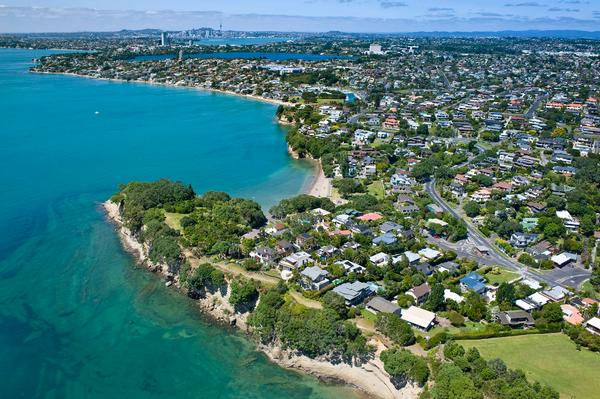Housing expansion will see many big changes for Auckland suburbs, predicts real estate head
Monday 9 May 2011, 2:41PM
By Bayleys
1439 views

Moves to restrain the residential spread of greater Auckland within existing metropolitan limits will require a substantial shift in mindset of the city’s future population, according to a senior figurehead in the real estate industry.
Auckland City Council’s Auckland Unleashed discussion paper promotes a number of far-thinking proposals and planning guidelines for residential property expansion throughout the region. The document is currently being reviewed by dozens of community groups, residents associations, research analysts, and property developers.
The plan highlights that estimates of Auckland’s housing shortfall over the next 20 years vary markedly between 12,000 and 90,000 dwellings. Bayleys Real Estate managing director Mike Bayley said he believed the shortfall figure to be somewhere around the 50,000 – 60,000 mark for new dwellings.
Mr Bayley said the style and design of new dwellings had already been established over the past 20 years – such as high rise inner-city apartment blocks, low rise terraced units in city-fringe suburbs or lifestyle blocks in the country. However, what would change over the coming generation would be where those residential developments would be found.
“A common word that resonates throughout the Auckland plan is ‘compact’. That would tend to indicate the council is looking at intensifying residential land use as much as possible – going up rather than out,” he said.
“The next step, as outlined in the report, is to look at what locations best suit residential housing intensification, redefining minimum land build sizes in the suburbs, and protecting the lifestyle blocks of those in country locations.
“More compact mid-rise apartment block style developments around the 140 square metre size for example would fit well around transportation hubs – such as Birkenhead, Milford, Browns Bay, Henderson, Te Atatu, Three Kings, Greenlane, Onehunga, Dannemora/FlatBush, and Glen Innes.
“The likes of Kingsland, Ellerslie and Mairangi Bay – already witnessing apartment developments – would see this trend continue.
“Concurrently, all of these areas are well served by existing infrastructure services - such as schools, shops, and social amenities - so there is minimal investment required to facilitate supporting higher population numbers.
“The thing all of these centres have in common is that they are developing their own ‘village’ style retail hearts. For example, we are seeing the return to ‘local’ stand-alone butchers, cafes, florists, gourmet foodstores, and of course the likes of banks. There is a strong return to local community retailing for convenience or recreational shopping.”
Mr Bayley said the intensification of CBD fringe sites should not be confused with the stereotypical 50 – 70 square metre sized dwellings constructed around Auckland’s central commercial precincts – with one and two bedroom apartment tower blocks.
“These smaller inner-city dwellings have a place in the market - offering first-time property buyers a first step up on the home ownership ladder. They are also attractive to investors who know they will always have a letting-market of students and young urban professionals wanting to live close to the centre of the city - with all the attractions that style of living offers.
“At the other end of the spectrum, I think that in the likes of Ponsonby, Mt Eden, Newmarket, Parnell, and Takapuna we could well see the evolution of high-end terraced style residences – something along the lines of 400 – 500 square metre individual homes over three to four storeys each, or four to five story residences split between two homes,” he said.
“There are a number of these style developments evident already in these areas. However, I believe their prevalence will continue to grow in the short to medium-term as suitable sites are identified and built on, before eventually becoming too scarce as to make such developments commercially viable.”
Mr Bayley said those homeowners and prospective buyers with an affinity toward the traditional Kiwi ‘quarter acre section’, or larger Victorian-style landholdings with gardens and greenery, would still be catered for in the Auckland of the future.
“There will always be buyers for larger homes who want big lawns and mature trees – and market forces will dictate that these holdings remain intact. What will happen though is those properties will become increasingly sought after as the population grows, and as a consequence, they will continue to retain their ‘top end’ market values,” he said.
“Areas like Titirangi, Remuera, Devonport and the Eastern suburbs along the waterfront already have the reputation for having mature vegetation on substantial sections, with homes of distinction. There are no reasons to see why that reputation will change and move to infill housing.”
Mr Bayley said he was heartened to see the council plan questioning uncontrolled land-size intensification in rural areas to protect the ‘green-environment’ nature and commercial production levels around townships such as Clevedon, Pukekohe, Huapai, Kumeu, Helensville.
“Lifestyle blocks should remain as the lungs of the city,” he said. “On the whole, lifestyle block land ownership works well in conjunction with its neighbours on productive rural land.
“However, there is scope for tasteful, high-end, small section size, residential developments in rural or outlying pockets which would allow people the affordable opportunity of enjoying the country lifestyle, but on smaller landholdings compared to lifestyle blocks.
“From a social perspective, city dwellers will always have a need to easily access the rolling hillside environment which the city’s greenbelt provides, and this is another reason to protect the special nature of these greater areas,” Mr Bayley said.
“This underpins the council’s identification of horticulture, agriculture, and environmental tourism as long-term commercial opportunities in these areas.”
Comments and submissions on the Auckland Plan close on May 31.